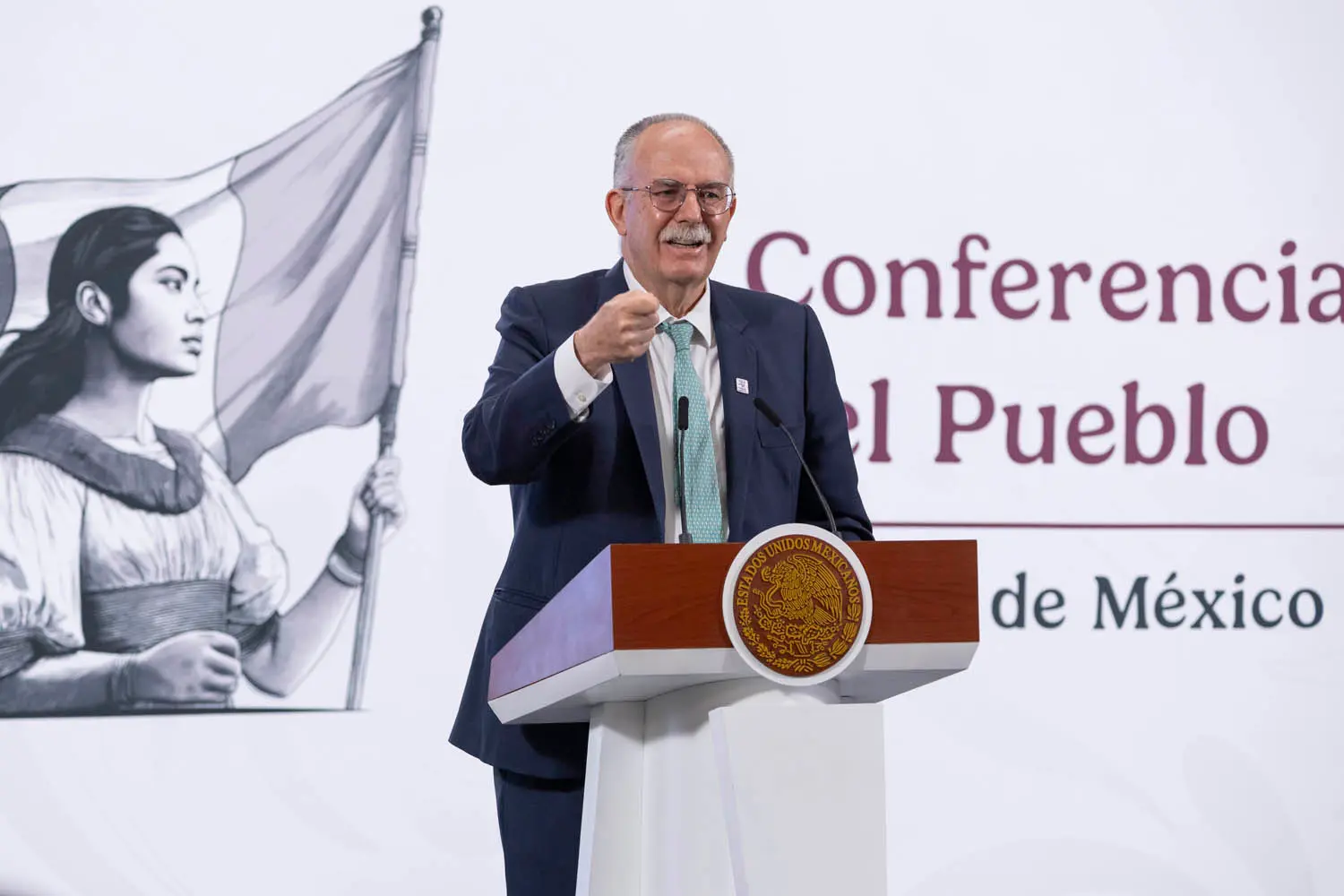
Minister of Agriculture and Rural Development (SADER) Julio Antonio Berdegué Sacristán said that “Mexico has done everything materially possible” to combat screwworms, a pest that arrived from South America and has infected domestic livestock.
On May 10, U.S. Secretary of Agriculture Brooke Rollins announced the immediate closure of the border to live cattle imports.
In a message posted on social media, she said: “Due to the threat of the New World screwworm, I am announcing the suspension of live cattle, horse, and bison imports through the southern U.S. border ports of entry, effective immediately.”
However, the Mexican official emphasized that it was the United States that failed to control the pest, as it operates the only plant in Panama that produces sterile flies — the method used to combat the screwworm.
Berdegué explained that the pest reappeared in livestock in Panama in June 2023, as it is endemic to South America. Since then, the pest has traveled 3,700 kilometers to reach Mexico’s border with Guatemala.
At that time, he clarified, Mexico was not responsible for controlling the outbreak — unlike the United States, “which has the only plant in the region, in the continent, that produces the sterile flies needed.”
Nevertheless, he said that beginning in the same month the outbreak emerged in Panama, the Mexican government — then under President Andrés Manuel López Obrador — ordered reinforced inspection measures at airports and customs checkpoints, in addition to launching a training campaign for veterinarians and a preventive campaign aimed at livestock owners.
“In July (2023), (the screwworm) still hadn’t arrived, but we saw it approaching. President Andrés Manuel López Obrador ordered the activation of the National Emergency Device, which grants special powers to the Ministry of Agriculture and SENASICA (National Service for Agri-Food Health, Safety and Quality) to implement a series of controls,” he said during President Claudia Sheinbaum’s morning press conference.
Minister Berdegué stressed that, starting in October 2024, the administration led by President Sheinbaum contacted the then-U.S. Secretary of Agriculture and reviewed the campaign, coordinating measures with U.S. health authorities from day one.
“We saw that things were going well and that we had to prepare for what could occur. In fact, we hosted a visit from the U.S. Undersecretary of Agriculture responsible for these issues. She came to Mexico, we met with her, she saw what we were doing. In short, we’ve always worked hand in hand with U.S. health authorities,” he emphasized.
The first case of screwworm in Mexico was detected on November 24, 2024, discovered at checkpoints that had been established well in advance, according to Mexico’s Minister of Agriculture.
He explained that 100 percent of animals moving from southern Mexico toward the center or northern areas of the country are inspected one by one and treated preventively with internationally approved medications to ensure safe livestock movement.
Berdegué noted that sterile flies “are like a fire extinguisher used to put out this fire,” since they interrupt the reproductive cycle of the infected fly. That’s why, since November 2024, dispersal began with the few flies provided by the United States.
“Since then, we’ve maintained control over livestock movement and epidemiological monitoring. This means that in areas where we believe there is risk — or where we already know there are screwworms — our inspectors and those from livestock associations visit ranches and inspect livestock to identify cases.”
He added that when a case is reported or found, a 20-kilometer radius is isolated and all ranches within it are inspected.
In this context, Berdegué said the federal government has invested tens of millions of pesos in sanitary containment measures and launched a large-scale training and health education campaign. Practically all livestock farmers in Mexico have been trained and informed, as have livestock veterinarians.
He added that Mexico is now receiving 100 million sterile flies per week for dispersal across various zones, and an agreement has been reached with U.S. health authorities to release up to one billion flies during this high-risk period.
Berdegué also reported that following a conversation with his U.S. counterpart Brooke L. Rollins on May 11, a 15-day suspension of Mexican livestock exports was agreed upon, a window in which measures will be taken to reopen the border.
In addition, the Minister of Agriculture said that yesterday, he reached an agreement with governors from affected southern Mexican states and livestock associations.
“We are doing everything that is materially possible. For months, we have asked — with no response — for the opening of a sterile fly production facility in Chiapas, because that is essential to eradicate this pest,” he concluded.
Related: Mexican Scientist Leads Project to Degrade Plastics Using Insects
Mexican Press Agency is part of ALMA, which is dedicated to news and information about Mexico and Mexicans in the United States and is a fiscally sponsored project of Social Focus, a 501(c)(3) nonprofit organization based in Redwood City, California.